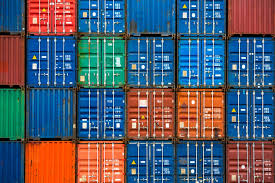Stacking Shipping Containers Safely for Efficient Storage
2024-07-29
Stacking shipping containers safely is crucial for efficient storage and ensuring the integrity of both the containers and their contents. Proper stacking not only maximizes storage space but also minimizes risks related to structural failure and safety hazards. Here’s a guide on how to stack shipping containers safely:
1. Site Preparation:
- Level Ground: Ensure the stacking area is on level, stable ground. Uneven surfaces can lead to shifting or instability.
- Foundation: Use a solid foundation, such as a concrete pad or gravel, to distribute the weight evenly and provide stability.
- Drainage: Ensure proper drainage to prevent water accumulation around the containers, which could cause rusting or erosion.
2. Container Selection and Inspection:
- Condition: Inspect containers for structural integrity before stacking. Look for any damage, rust, or deformation that might affect stability.
- Uniform Size: Use containers of the same size and type for stacking to ensure uniformity and stability.
3. Stacking Procedures:
- Alignment: Align containers properly to avoid misalignment that could lead to instability. Ensure they are stacked in a straight and level manner.
- Corner Stacking: When stacking, ensure that the corners of containers are aligned to distribute weight evenly. Containers are designed to be stacked on their corners, which are the strongest parts.
- Stack Height: Limit the number of containers stacked vertically based on the strength of the containers and the load they are carrying. Typically, 4-5 containers high is a safe practice, but this can vary based on container strength and load.
- Load Distribution: Distribute weight evenly across each container and within the stack. Avoid placing excessively heavy items in the upper containers.
- Stability: Use appropriate equipment and methods to secure containers in place. This may include securing straps, ropes, or other stabilization methods.
4. Safety Measures:
- Training: Ensure that personnel involved in stacking and handling containers are properly trained in safety procedures and equipment use.
- Equipment: Use appropriate lifting and stacking equipment, such as forklifts, cranes, or container stackers. Ensure equipment is maintained and operated safely.
- Personal Protective Equipment (PPE): Wear necessary PPE, such as hard hats, gloves, and safety shoes, to protect against potential hazards.
5. Securing Containers:
- Lashing and Securing: Use lashing systems or securing straps to hold containers in place, especially during transport or in areas prone to high winds.
- Wind Bracing: For containers stacked in open areas, consider adding wind bracing or additional securing methods to prevent movement due to wind forces.
6. Access and Maintenance:
- Access Points: Ensure there are safe and accessible entry points for containers, including ladders or stairways if necessary.
- Maintenance: Regularly inspect stacked containers for any signs of wear, damage, or shifting. Address any issues promptly to maintain safety and stability.
7. Emergency Preparedness:
- Plan: Have an emergency response plan in place in case of incidents such as container collapse or accidents.
- Training: Ensure staff are trained in emergency procedures and know how to respond to potential hazards.
8. Legal and Regulatory Compliance:
- Local Regulations: Follow local building codes, safety regulations, and industry standards related to stacking and storing shipping containers.
- Permits: Obtain any necessary permits for stacking containers, especially if they are being used for long-term storage or in public areas.
9. Long-Term Storage Considerations:
- Ventilation: Ensure proper ventilation within containers to prevent moisture buildup and condensation, which can cause rust or damage.
- Inspection Schedule: Establish a regular inspection schedule to check for any issues that might arise over time.
By following these guidelines, you can safely and efficiently stack shipping containers, maximizing storage space while ensuring safety and stability. Proper planning and adherence to best practices are key to successful container stacking and storage.



